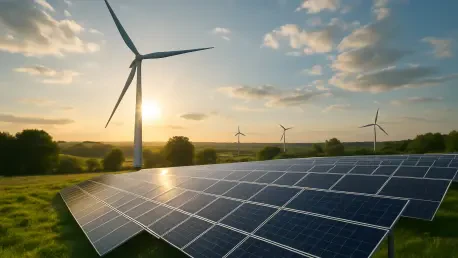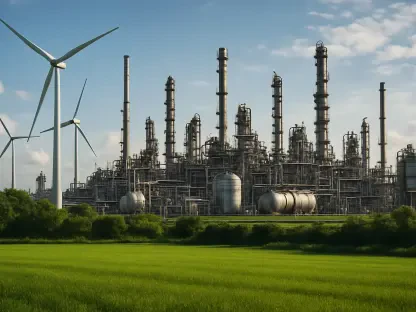Oklahoma, long recognized for tapping into its robust wind energy resources and generating over 40% of its electricity from wind turbines, now faces uncertainty with the passage of a new spending bill by President Trump. This legislation, which causes concern within the renewable energy sector, heralds fundamental shifts by mandating a phase-out of incentives and tax credits vital for wind and solar energy projects. Companies, especially those specializing in solar energy, had begun showing interest in expanding into Oklahoma, drawn by favorable incentives that supported green technology investments. The new bill, however, signals a contrasting direction, potentially curbing the progress made in fostering renewable energy projects. As Oklahoma’s burgeoning renewable sector grapples with possible repercussions, industry advocates and stakeholders find themselves questioning how these legislative changes will impact future development and sustainability efforts in clean energy, raising concerns about the state’s environmental and economic landscape.
Wind and Solar Projects Under Threat
For Oklahoma, the repercussions of this legislative shift transcend mere policy change; it poses a real threat to the state’s established and emerging renewable energy initiatives. Advocates like Kylah McNabb articulate a clear apprehension that positivity fostered in Oklahoma’s renewable sphere by a stable policy environment is being undermined. The revocation of incentives—a key driver for attracting investment—could potentially stall wind and solar growth, hurting economic prospects built around these technologies. Such a shift not only destabilizes confidence but could also impede innovation and progression in fields critical to meeting future energy demands. Meanwhile, the renewable energy sector’s advocates express profound disappointment, acknowledging not just economic consequences but also a potential regression in clean energy climate goals. The fear is the new bill may unravel years of progress, destabilizing an industry that’s proven crucial for both environmental benefits and employment opportunities in Oklahoma.
Fossil Fuel Industry Gains Momentum
While renewables face challenges, proponents of the new legislation, including the American Petroleum Alliance, see the bill as an opportunity to bolster the fossil fuel industry. They argue that it aligns with Trump’s broader agenda to promote energy independence and global competitiveness by encouraging fossil fuel investments through expanded land leases for drilling. In doing so, the bill aims to deregulate the industry, paving the way for increased exploration and extraction activities. This emphasis on fossil fuels is seen as essential for job creation and economic growth within traditional energy sectors. However, it also risks sidelining clean energy initiatives that have gained traction in Oklahoma. The legislative shift raises questions about balancing fossil fuel interests with the nation’s transition to sustainable energy solutions and whether incentivizing fossil fuels over renewables could have long-term consequences for energy strategy and climate commitments.
Energy Demand and Renewable Solutions
Beyond legislative implications, Oklahoma is confronting rising energy demands as new infrastructure developments, such as data centers, increase consumption rates. This scenario presents a challenge for traditional power sources like natural gas plants, with equipment backlogs hindering their ability to meet growing energy needs effectively. In response, renewable options such as solar energy and battery storage are touted as viable, cost-effective solutions to address the gap. Solar installations could offer rapid deployment benefits that align with the state’s urgency to accommodate heightened consumption levels. Despite legislative setbacks, some ongoing projects retain eligibility for tax credits until 2027, allowing continued progress in renewable initiatives. As Oklahoma’s energy landscape evolves, prioritizing cost-effective renewable strategies that align with environmental objectives remains crucial. The ability to navigate these challenges will determine Oklahoma’s future energy success, balancing immediate needs with sustainable development goals.
Weighing Economic and Environmental Impacts
Oklahoma, historically known for leveraging its rich wind energy resources to produce over 40% of its electricity from wind turbines, is now facing uncertain prospects due to a recent spending bill signed by President Trump. This bill ushers in significant changes by initiating a gradual elimination of incentives and tax credits that have been crucial for both wind and solar energy projects. Previously, companies, particularly in the solar sector, found Oklahoma appealing for expansion because of these supportive incentives that encouraged investments in green technologies. However, the enactment of this new legislation suggests a reversal in direction, posing a potential threat to the advancements achieved in the renewable energy sector. As Oklahoma’s expanding renewable industry copes with these possible repercussions, industry advocates and stakeholders question the future impact on development and sustainability in clean energy. This shift raises serious concerns regarding the state’s environmental and economic future.









